Well, every now and again, one finds the need to replace a section of brake line tubing. It might be on account of a recent mod that rendered your existing tubing too short or too long. It might be from an ill tempered rock that managed to jump up from the trail and nail your brake line in a vulnerable spot. What ever the reason, don’t be afraid to try it yourself. With a little practice (hey, you might get it right the very first time), you should be able to fix one in no time and be on the road in fine shape. One important thing to remember is that you are working on a very important system on your Jeep. Your braking system is literally the only thing between your vehicle and the one in front of you. If you have doubts, seek help from a professional shop or someone who is experienced in doing this type of work.
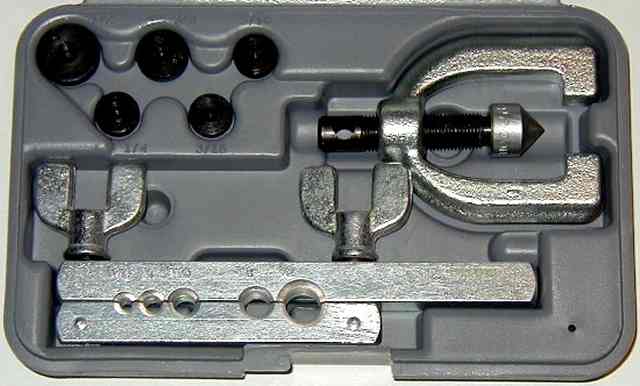
Here is a typical flaring tool. This is not the one that Scott (did I mention I have my own “flaring” guy?) used, but it is a good representation of what usually comes in the kit. The clamp with the two wing nuts on it is just that…and is used to secure the tubing in place while you are flaring it. The small black discs are for the various sizes of tubing and work much like a small anvil as they form the metal tubing. The correct size is selected based on the diameter of the tubing you are working on. The U shaped piece with the bolt through the top is the flaring tool that you will use to actually flare the tubing. You will see it demonstrated in the pictures following this.
I would recommend that you practice this entire process a few times before you jump into the middle of your brake line and whip out a quick fix. It should go without saying that the method of “measure twice, cut once” certainly applies here. If you don’t follow this method, you will most likely be one of the “Gee, I don’t know what went wrong. I cut it twice and it is still too short!”

First, you have to start the process by getting your fingers all nasty and dirty like Scott has done. Once you do that, you can take a tubing cutter and cut the brake line to the desired length. Given the chance, I fully support the idea of putting a slight bend in the tube (in the middle if possible) that will allow you to flex the tube to make it shorter or longer since I’ve already figured out that one can measure it 10 times and it still won’t quite come out right.
I read an interesting comment on a forum thread earlier today concerning using a tubing cutter on the brake line material. It is as follows:
Most instructions will say to use a tubing cutter to cut the lines. Many have used these, I’m sure and have made “successfully” flares.
When I did my lines, I could not get a decent flare to save my life. I made many practice attempts to no avail.
I then read somewhere to cut the tube, DO NOT use a tubing cutter as the action will “harden” the end and make flaring more difficult if not impossible.
Here’s what I did. I used a cut-off wheel on my Dremel tool to cut the brake line tube and then a small fine tooth file to de-burr the edges. I used the same model Flaring tool you are considering. I got a great flare on the first try and all others in my practice mode with this method. I would not consider myself a master at this by any stretch but, using this method worked for me.
A follow-up comment concerning this is was posted on the thread:
That’s what happens when you know how to do something and forget that other’s don’t.
I use a tubing cutter, but, I also have a 1/4″ jeepbide multi-flute countersink that I de-burr the ID with. Probably removes most of the work hardening. I know if I don’t use it my flares suck. Another thing is to make sure you have the clamp as tight as you can get it without breaking the wing nuts. (you can bend them a little, just not too much)
If you don’t get it tight, the first part of the flare will push the tube down and then there won’t be enough to double over.
Well, there, you have it, some input from a couple of folks who have been there, done that, and got the t-shirt! Actually, the comments came off of an on-line forum I frequent and the 2nd comment was from a good friend of mine who flared the brake lines on my TJ during the ZJ disc brake conversion. So….I am thinking what he has to say is pretty reliable input.
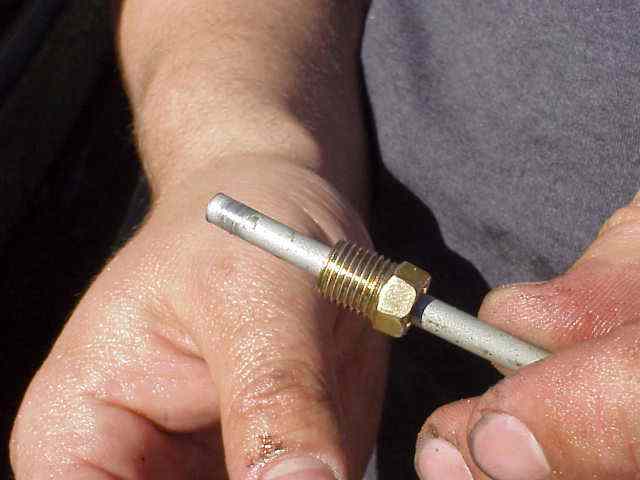
After the tubing is cut, immediately place the fitting over the tubing. Do it now….don’t wait till later, don’t stop to go get a drink, don’t go to the bathroom, do not pass GO, do not collect $200….DO IT NOW! Been there, done that, lost the t-shirt! Yes, it is so easy to immediately start flaring and then realize the fitting is sitting on the work bench and you have a PERFECT flare on the end of the tubing that is now going to get cut off! (Remember….then it will probably be too short too!)
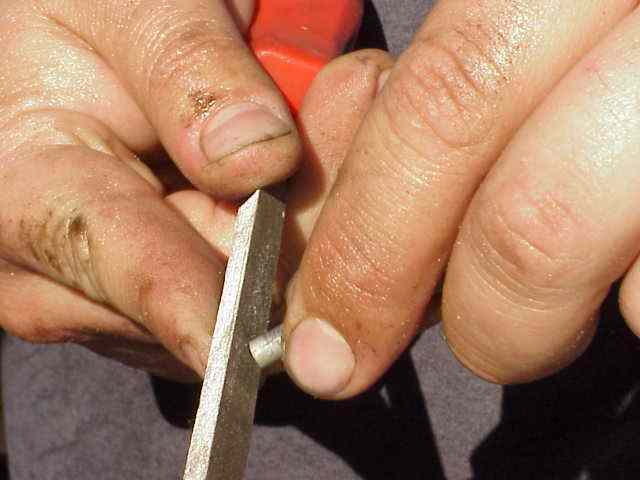
Scott decided that the end of the tubing was not perfectly square, so he opted to dress it up a bit with a small file. Based on what was said above (from the on-line forum), this method probably helped remove some (all?) of the work hardened material on the cut end of the tubing. Regardless of the method used, be sure the end of the tubing is true and square.
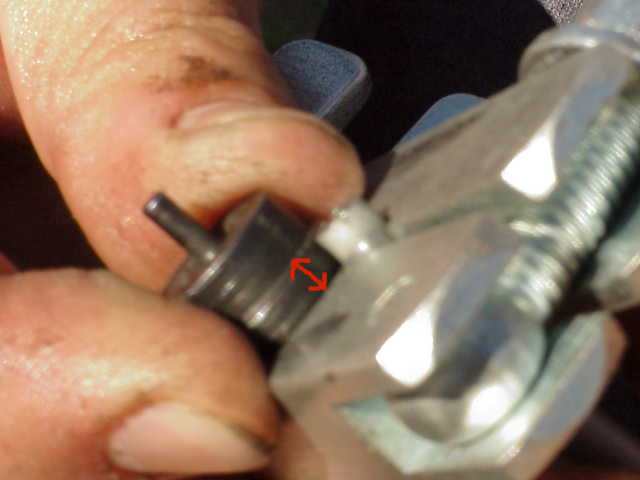
It is important to clamp the tubing at the correct length so the flare will come out correctly. In this photo, the small disc anvil is also used to gauge the tubing for the correct length. I’ve drawn a double ended arrow on the raised section of the anvil. Place the anvil flush against the clamp, adjacent to the protruding section of tubing, and adjust the tubing in the clamp until they are even with each other (as can be seen in the above picture). Tighten the wing nuts on the clamp as tight as you can so the tubing does not move while the flare is being formed.
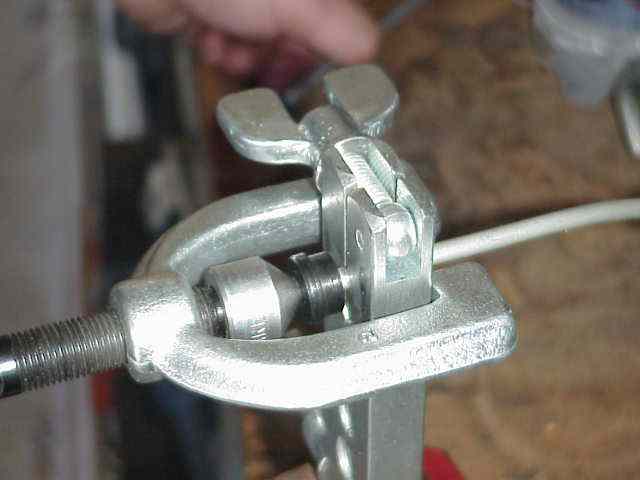
Slip the flaring tool over the clamp and place the anvil disc over the end of the tubing. Hold everything in place while you tighten the bolt in the flaring tool. At this point, you will tighten the bolt until the anvil disc is pressed completely flush to the clamp. You won’t be able to see any portion of the tubing at that point.
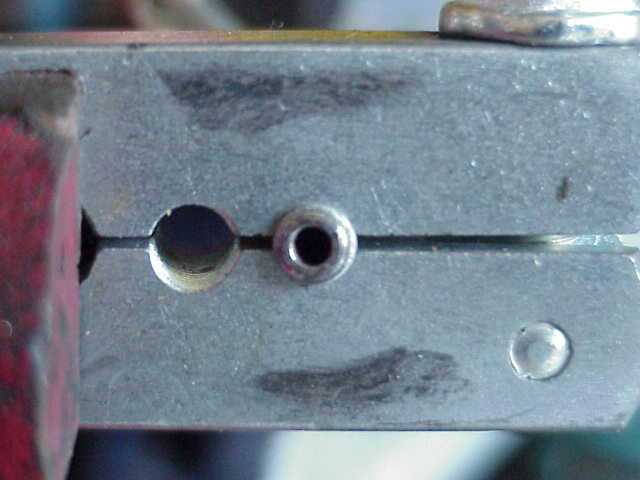
Remove the flaring tool and the anvil disc. The flared end of the tubing should be well formed and even all the way around. The picture above is not a perfect example of what it should look like. This one was slightly off center because the end of the tubing was not cut squarely. As you can see, it caused the initial flare to be slightly formed off to the left side. Anyway, the above picture should give you a pretty good idea of what you are looking for. Nicely shaped, even all the way around, and properly centered on the end of the tubing.
Put the flaring tool back onto the clamp and once again tighten it. You are now applying the 2nd flare to the tubing. Tighten the bolt until it does not go any further.
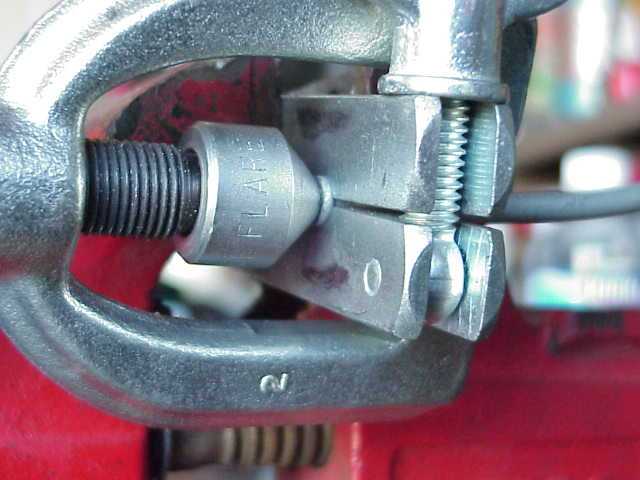
Here is a close-up of the 2nd flare being applied. The bolt has been tightened as far as it can go.
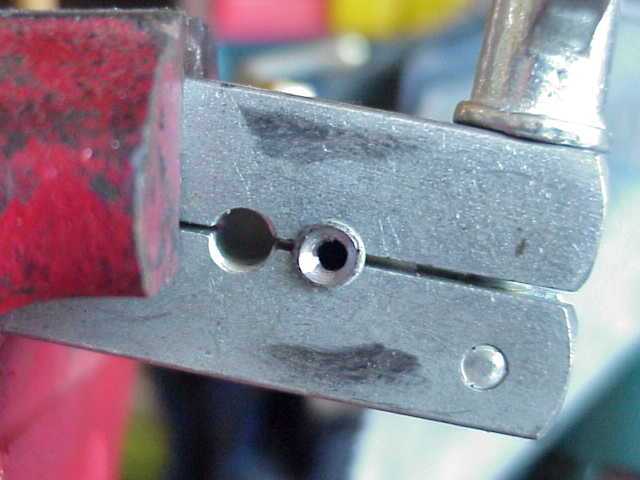
Here is the final product. This is the same one that was slightly off center after the first flaring step was completed. This has a slight ridge on it and won’t provide a good seal. Because the end of the tubing was not squarely cut, it resulted in this imperfect flare.
Well, you’ve seen an example of not what to do….so obviously, you should have no problem identifying a good flare. It really is not that hard to do. Scott has gotten more of them correct than he has messed up so he is batting better than 500 (a good score in anyone’s book). You can expect to spend around $35 and up for a good double flare tool. For occasional use, you might find it difficult to shell out $75 or more for a quality tool. But I would not recommend getting one from Harbor Freight either.
Good luck on your projects and remember to practice on a section of tubing before you do it for keeps. You can get a tubing at your local auto parts store. A 2′ long section is plenty cheap and you will get a lot of practice from it.
